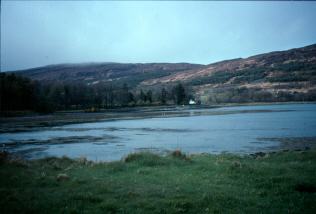

A sip of Rum
By James Carron
For decades the west coast island of Rum was known as the 'forbidden isle', closed to all except its rich laird and his friends. Now, however, it's a nature reserve and a walkers' paradise.
Rum ' the largest of the Small Isles ' has been a National Nature Reserve for over 40 years. It is home to thriving herds of red deer, the white-tailed sea eagle (which was reintroduced in recent years), otters, seals and an array of birdlife. The island was first settled in the Stone Age and its occupants over the years have ranged from Norse invaders to the landed gentry who, sadly, dispatched the native population to the Americas during the infamous Highland Clearances. The best known of these former landowners was a wealthy English industrialist, Sir George Bullough, who built the fabulous Kinloch Castle during the final years of the 19th century. Dominating the island's tiny village, it is crammed with exotic treasures collected from all over the world and once boasted lavish gardens and hot houses where he grew palms and kept, of all things, alligators! In 1957 his widow sold the island and castle to the nation for £23,000 (££1 per acre) and it is now cared for by Scottish Natural Heritage (SNH), a government agency.
From the pier walk west along a track to the island's school which sits above the shore. The bay was once used by islanders to trap fish. Now you are more likely to see a heron waiting patiently for a meal. From the school a path heads east through trees, emerging on to open moorland where a black arrow points the way. The ground cover is mainly heather, boasting a delightful purple carpet during the summer. A short way on more woodland is reached, the trees here planted in the early part of last century to provide shelter for game birds. Within the trees there's a small headstone, erected in 1920 to mark the grave of a local man who drowned after falling from his fishing boat.
The path crosses the burn in Gleann Carn nan Dobhran (Cairn of the Otters Glen). You may be lucky enough to see these rare coastal swimmers here, along with seals and eider ducks. The beach below the path offers excellent views across the sea to Skye and the famous Black Cuillin peaks and the hills of Knoydart on the mainland.
The nature trail ends at an abandoned village, once home to families who were brought to Rum from Skye and Mull in the early 19th century to look after 8000 sheep. The beasts replaced the native population, which numbered around 300 at that point. However, a drop on market prices brought the venture to a swift end and the shepherds and their families also left. Now the main residents of the ruined cottages are gulls and terns. From here retrace your steps along the coastal path to the school.
Follow the track west as it curves round the front of the school to meet a junction leading down to the old slipway. Don't take this but stay on the main track as it skirts through peaceful woodland where the distinctive call of the cuckoo is often to be heard. The way crosses a burn and skirts along behind a cottage. Another burn is crossed a short way on before the track passes through white wooden gates. Beyond these it reaches the SNH reserve office.
Next to the office there's a wooden shelter with information boards and also a regularly updated chart with details of conservation work and animal and bird sightings. Carry on along the 'high road', following a sign for Kinloch Castle. The track passes a pair of white houses and crosses a substantial stone bridge to reach the impressive mansion.
Kinloch Castle was built between 1897 and 1900 using sandstone imported from Annan and its main rooms have been preserved and still contain the many unique and wonderful items gathered by Sir George. Guided tours are available at certain times but if you don't manage to go on one of these its worth having a peak through the windows just to see what's inside. Cross the main drive in front of the building and at the next junction just before the bridge over the Kinloch River, turn right. The track leads down to a small shop and Post Office, selling postcards and booklets on the island.
Follow the coastal track south. It curves inland to cross a burn then hugs the coast round the head of Loch Scresort, back to the reserve office. Turn left here and a track skirts along above the island's rather basic campsite to reach a solid stone pier. A path rises through the heather, dropping down to a boathouse at the head of the old slipway. Follow the track from here back to the pier.
WALK FACTS
Distance 4.25 miles/7km. ;
Map OS Landranger 1:50,000 sheet 39. ;
Start Rum Pier (grid ref NG 411993). ;
Grading Easy, low level walk suitable for all.
Getting to Rum There's a daily ferry service (except Sundays) operated by Caledonian MacBrayne (tel - 01475 650100 or log on to www.calmac.co.uk)
from Mallaig to Rum, sailing on the MV Loch Nevis. Sailings on Mondays, Wednesdays, Fridays and Saturdays provide sufficient time on the island between
arrival and departure. The return fare varies from £13 to £15. Visitors wishing to stay overnight on Rum should contact the reserve office in advance (tel - 01687 462026).

